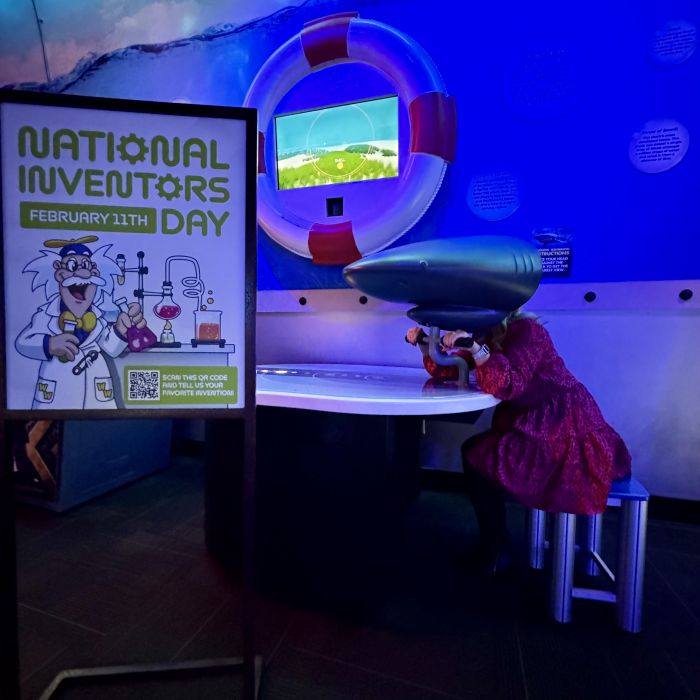Chances are, those who are reading this are using technology to do so. We have become so used to many of the items we use in our daily lives that we often forget they were once ground-breaking inventions. WonderWorks is putting inventions in the spotlight by celebrating National Inventor Day, held annually on February 11. To celebrate, they have a temporary exhibit highlighting some of the most important inventions and asking guests to share their ideas for new inventions to change the world.
“WonderWorks strives to inspire the next generation of innovators and inventors, and so it seems fitting to highlight the great inventions that came before us,” says Taylor Geraghty, marketing development manager for WonderWorks. “Who knows, this exhibit may inspire our guests to create an invention that solves one of life’s biggest problems. STEM education is at the heart of innovation, and we’re excited to be a small part of that.”
Many inventions throughout history have focused on science, technology, engineering, and mathematics (STEM), which is the focus of the activities and learning opportunities at WonderWorks. Some of the most common inventions that we use daily came from inventors that most people know by name, including Thomas Edison, Benjamin Franklin, Marie Curie, Nikola Tesla, Henry Ford, Steve Jobs, and Elon Musk.
WonderWorks focus is to celebrate the world of imagination and explore the differences between an inventor and an entrepreneur. Guests will learn fun facts about past inventions, the geniuses behind them, and how these inventions have changed the way we live.
WonderWorks solicited input from local teachers and fans through an online poll, asking what inventions people use daily, inventions people feel they can't live without, and suggestions for future inventions.
The poll results included:
· Inventions that people use daily: 95% electricity, 94% Internet, 90% telephones, 92% cars, 72% calculators, 47% printers, 34% calculators, 9% compass.
· Inventions they can’t live without: 66% electricity, 14% cars, 12% Internet, 4% telephones, with television, printer, and compass at 1-2%.
· Inventions most requested: A time machine, things that are good for us and the environment, invisible cell phones, an iron that works on its own, a more efficient way to store energy to be used as electricity, a way to be in more than one place at a time, flying cars, a dryer that folds clothes, a cure for cancer, a robot to clean the entire house, an animal translator, and glasses that would unscramble words for the dyslexic population.
“We always love hearing from teachers, students and local fans to help us develop our latest exhibits at WonderWorks,” added Geraghty. “In celebrating National Inventor’s Day, we hope to ignite a spark that creates the next generation of inventors. Maybe the next Einstein is amongst us!”
In January 1983, President Ronald Reagan designated February 11 as National Inventor Day, picked to coincide with Thomas Edison's birthday. The goal of establishing the day was to put the creative endeavors of inventors in the spotlight. Since the first patent in the U.S. was granted in 1790, there have been over 10 million issued, according to the National Inventors Hall of Fame. Some of the lesser-known names of inventors who have made it into the Hall of Fame and whose inventions we use regularly include Edwin Howard Armstrong (FM radio), Edward W. Bullard (hard hat), Richard Gurley Drew (adhesive tape), and William Painter (bottle cap).
WonderWorks is an amusement park for the mind, featuring a wide variety of "edu-tainment" opportunities. Each of the WonderWorks locations offers over 100 hands-on exhibits covering natural disasters and space discovery, an imagination lab, a physical challenge zone, a far-out gallery, and a light and sound zone. There are six WonderWorks locations, including Orlando, Myrtle Beach, Pigeon Forge, Panama City Beach, Syracuse, and Branson. For more information, visit the site at: https://www.wonderworksonline.com/











